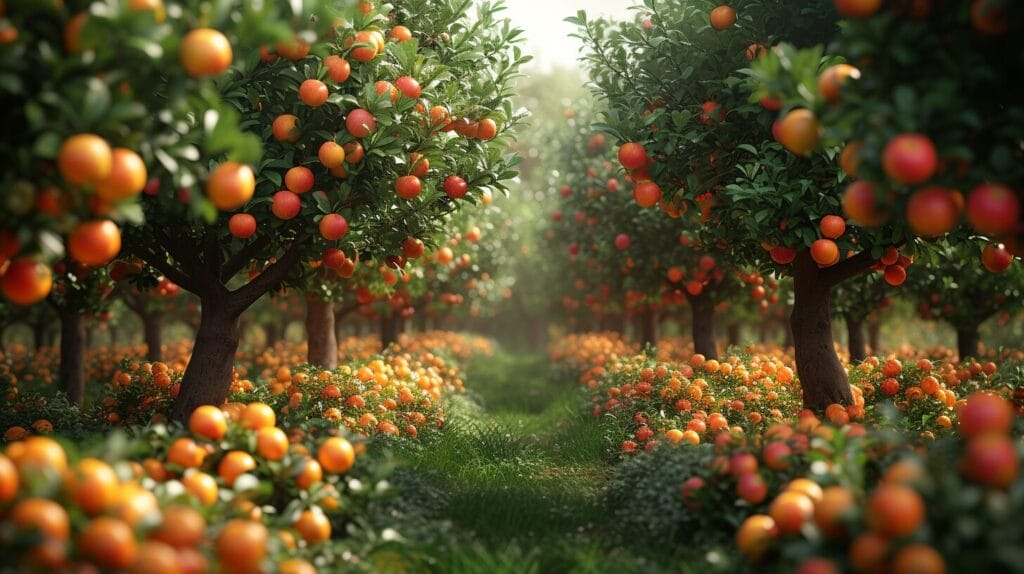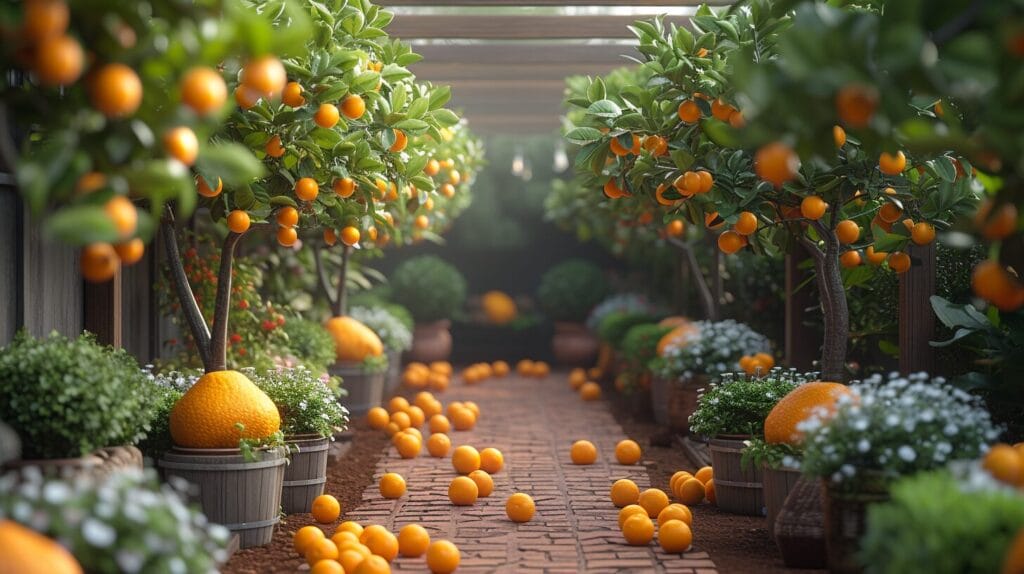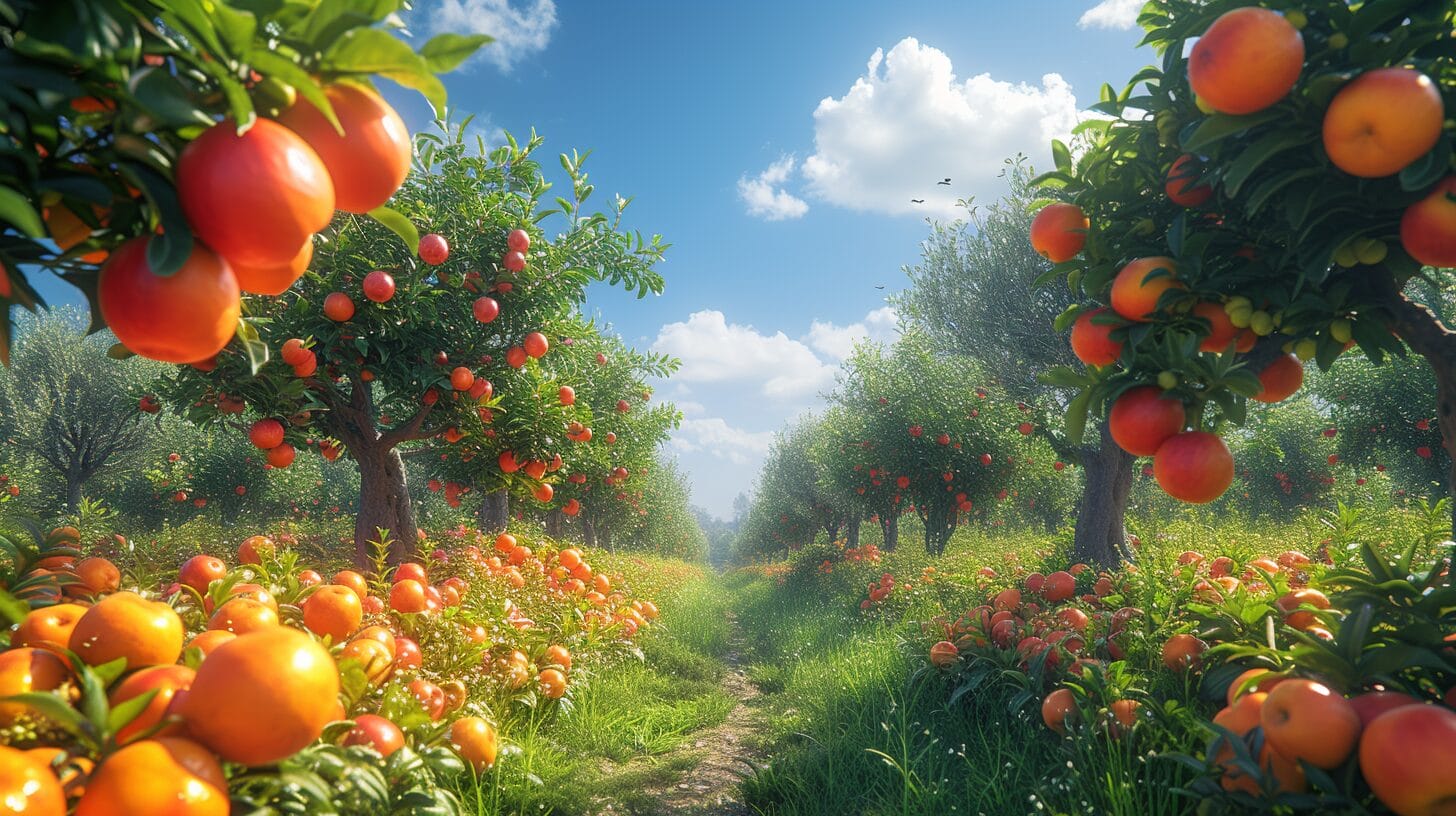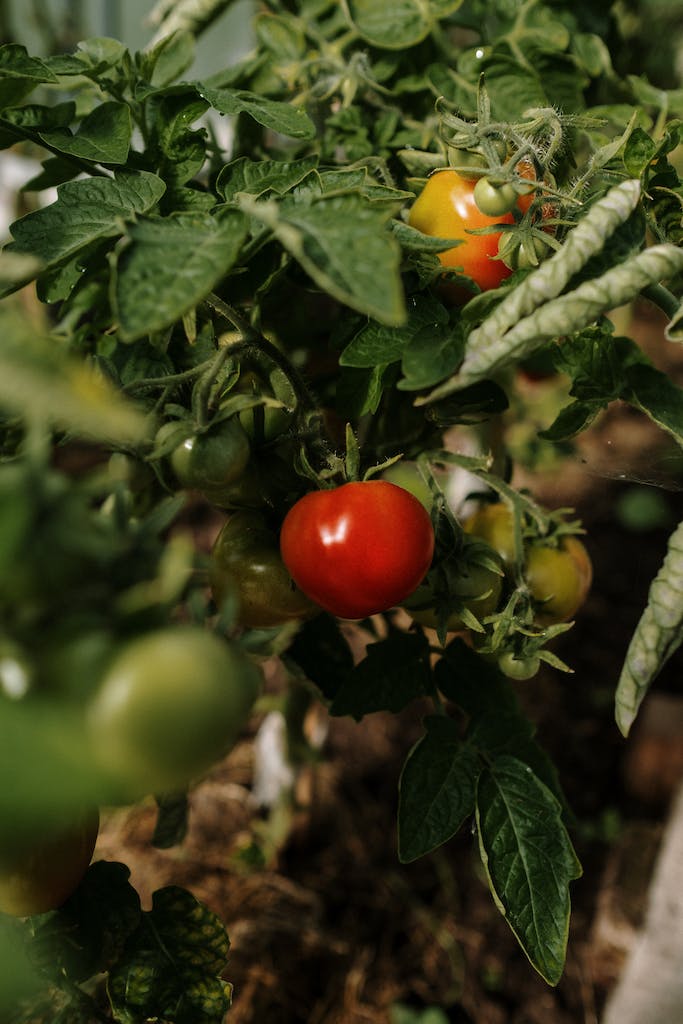While standing in our backyard, we admire the rich bounty of apples, peaches, and pears from our thickly planted orchard. We find ourselves astonished by the wonder of enhancing fruit production through the intelligent positioning of trees.
With each bite of juicy, tree-ripe fruit, we are reminded of the satisfaction that comes from utilizing our limited space to its fullest potential.
How can we achieve such remarkable results? How can we ensure a continuous supply of delectable fruits while managing our trees efficiently?
Join us as we uncover the secrets behind planting fruit trees close together and discover the techniques of tree spacing that will revolutionize our fruit-growing endeavors in 2024.
Key Takeaways
- High-density planting is a technique that optimizes fruit production in a limited space.
- Proper tree spacing is crucial to ensure sunlight, airflow, and nutrient availability.
- Compact fruit tree varieties are suitable for close planting and should be selected based on compatibility and pollination requirements.
- Regular maintenance, including pruning, disease control, and adequate watering, is essential for successful high-density planting.
Understanding the Basics of Planting Fruit Trees Close Together

When planting fruit trees close together, understanding the basics of high-density planting techniques is crucial. High-density planting refers to the practice of positioning trees near maximize fruit production in a confined space.
By reducing the distance between trees, we create a more efficient use of the available area and increase the overall yield. Proper spacing between trees is essential to ensure adequate sunlight, airflow, and nutrient availability for each tree. Recommended spacing for high-density planting systems is typically 2 to 3 feet between trees.
High-density planting offers several advantages for fruit production, from better pollination to efficient resource use. However, potential problems, such as restricted root growth and competition for nutrients and water, must be closely monitored and addressed.
The Art of Tree Spacing in Your Backyard Orchard

In planning your backyard orchard, the art of tree spacing involves careful consideration of various factors. These include optimal fruit tree spacing based on specific tree types, strategic planting patterns, and the benefits of close planting.
Each type of fruit tree has different space requirements, and a spacing guide specific to the tree type can be helpful. Additionally, consider the ripening times of different fruit varieties and plant them accordingly to extend your harvest season.
Selecting Suitable Fruit Tree Varieties for Close Planting

To maximize fruit yields in a small space, selecting suitable fruit tree varieties for close planting is essential. Some fruit trees, such as dwarf apple, peach, plum, and pear trees, are naturally more compact and suitable for close planting.
Also, consider compatibility and cross-pollination requirements, especially for fruit trees like apple and pear that need cross-pollination to produce fruit.
Maintenance and Care for Fruit Trees in Limited Space

Our approach to maintaining and caring for fruit trees in limited space focuses on pruning techniques and controlling tree size. Regular pruning is essential for managing tree size and ensuring proper airflow and sunlight penetration.
Integrated pest management strategies, such as using organic sprays and attracting beneficial insects, are also crucial in closely planted orchards. Adequate watering and fertilization should also not be overlooked.
Maximizing Yield from Your High-Density Planting

By implementing high-density planting techniques, we can maximize fruit yield in our backyard orchard. Techniques such as rotational pruning and enhancing pollination can further increase the yield.
Rotational pruning involves pruning different trees at different times to stagger the ripening times of the fruit. Enhancing pollination can be achieved by introducing additional pollinators, such as honeybees or mason bees, into the orchard.
| Technique | Benefit |
|---|---|
| High-density planting | Longer fruit season, easier tree management |
| Rotational pruning | Continuous fruit production, controlled tree size |
| Enhanced pollination | Increased fruit set, maximized yield |
By planting multiple fruit varieties with different ripening times and adopting high-density planting methods, families with limited space can enjoy a prolonged harvest of tree-ripe fruit.
With proper maintenance and care, this innovative technique allows for easier tree management and the cultivation of a diverse range of unique fruit varieties.
Conclusion
In conclusion, maximizing fruit yields through strategic tree spacing techniques in 2024 offers a revolutionary approach to backyard orchard culture.
By planting multiple fruit varieties with different ripening times and adopting high-density planting methods, families with limited space can enjoy a prolonged harvest of tree-ripe fruit.
With proper maintenance and care, this innovative technique allows for easier tree management and the cultivation of a diverse range of unique fruit varieties.
Join us in embracing this exciting opportunity to maximize fruit yields in our small spaces.
Frequently Asked Questions
What is high density planting for fruit trees?
High density planting refers to planting fruit trees much closer together than traditional spacing. This technique is used to maximize fruit yields in a limited space.
How far apart should you plant fruit trees?
The distance between fruit trees depends on the specific type of tree and the species. Typically, fruit trees are planted 15 to 20 feet apart, but some high density planting techniques may involve planting them as close as 4 to 6 feet apart.
Can different varieties of fruit trees be planted together?
Yes, planting different varieties of fruit trees together can be beneficial, as it can facilitate cross-pollination and improve overall fruit yields. However, it’s important to consider the space each tree will need at maturity.
How should fruit trees be pruned when planted close together?
When planting fruit trees close together, proper pruning techniques are essential to manage the growth and ensure adequate light and airflow reach each tree. This may involve regular maintenance pruning to control size and shape.
What happens if you plant fruit trees too close together?
If fruit trees are planted too close together, they may compete for nutrients, water, and sunlight, leading to stunted growth and decreased fruit production. Proper spacing is crucial for the health and productivity of the trees.







